This post is sponsored by Gagudju Dreaming in Kakadu National Park
Have you heard the expression “the scales fell from my eyes.”? It is used to describe an awakening of sorts – or a dramatic change of worldview. Well the scales fell from my own eyes back in 2002. Prior to 2002 my awareness of Indigenous Australia was limited to a few musty history lessons in primary school. I had never met an Indigenous Australian, I didn’t have much interest in Indigenous Australia, and frankly thought Indigenous Australia had nothing to do with me. That changed in 2002 on my first trip to the Northern Territory.
I clearly remember my “first contact”. On the drive from Melbourne to Darwin which was to be our new home we stopped in the outback town of Katherine. A group of Indigenous ladies were walking towards me. I didn’t realize I was staring until one of them said to me “Haven’t you seen people like us before?” I felt myself blush with shame. The irony of this was that I was already “well travelled”. I had lived in southern USA for a year, house sharing with an African American friend, and I had travelled to Cameroon in West Africa for a medical school rotation. It wasn’t until I was twenty six however that I first met an Indigenous Australian.
So who am I? You may as well call me “Whitey”. I am a sixth generation Australian, my mostly Irish and English ancestors moving to Australia in the mid 1800s. I was born in the USA but raised in Melbourne.
My experiences in the Northern Territory reshaped my understanding of what it means to be Australian, and my relationship with Indigenous Australians. This happened a few ways. While New South Wales has the highest population of Indigenous Australians the Northern Territory has the highest proportion of Indigenous residents. I worked at an Aboriginal Health Service – owned and run by the Aboriginal community of Darwin. At work, as a Caucasian Aussie I was in the minority. Most of my colleagues, and all my patients were Indigenous.
My patients and colleagues taught me about the importance of Country, members of the Stolen Generation shared their personal stories with me and I had the opportunity to laugh and play with my Indigenous friends on the staff volleyball team.
I experienced the country, the outback wonder of Kakadu National Park in both the wet and dry seasons. Glimpses back in time providing insight to Indigenous culture were seen at Indigenous rock art sites like Nourlangie and Ubirr Rocks. The paradox of Kakadu, that it was both so very, very Australian, yet not like any Australia I had ever known contributed to my change.
While I don’t believe in intergenerational guilt I realized that I am very much a daughter of colonialism. That the socioeconomic disadvantage faced many Indigenous Australians is incredibly important, and that the difference in live expectancy between Indigenous and non-Indigenous Aussies is unacceptable (at least ten years lower according to the Australian Institute of Health and Welfare). Consequently I have spent much of the last ten years working with Indigenous Australians in the field of Indigenous Health including in the Torres Strait and Cairns.
Perhaps answering my own inner call to Country I returned to my hometown of Melbourne to have my third child this year. Once more we are among Caucasian, Asian, Indian, Middle Eastern and African faces and Indigenous Australia seems far away. I am not sure whether when I go back to work I will have the opportunity to be involved in Indigenous health here. As a mother to young kids though I am passionately determined that they will not need an awakening like I did – that they will be raised with a spirit of inclusiveness and love towards Indigenous Australians embracing their shared story. I am deliberate in my parenting to this end, looking for opportunities to introduce them to Indigenous Australian people, history and culture. I thought perhaps by sharing my story other Australian parents may determine to do the same.
Having a yarn
I was surprised when I returned to Melbourne how many Indigenous faces there actually are in the crowd – once I looked. When I do see an Indigenous Aussie out and about I stop and have a yarn with them. In the queue at the bank, in the fruit shop, wherever. We don’t talk about much, perhaps the weather, sometimes I ask them where they are from, they will usually ask me about my kids. The people I have met that I have started yarning with may think me an overly chatting white sheila, I know. So be it, they are always friendly and open. Importantly though it gives my kids the message that I am comfortable and genuinely interested in Indigenous folk. For more info on how important a friendly face can be check out the Beyond Blue Stop, Think, Respect page and movies.
Indigenous Tourism
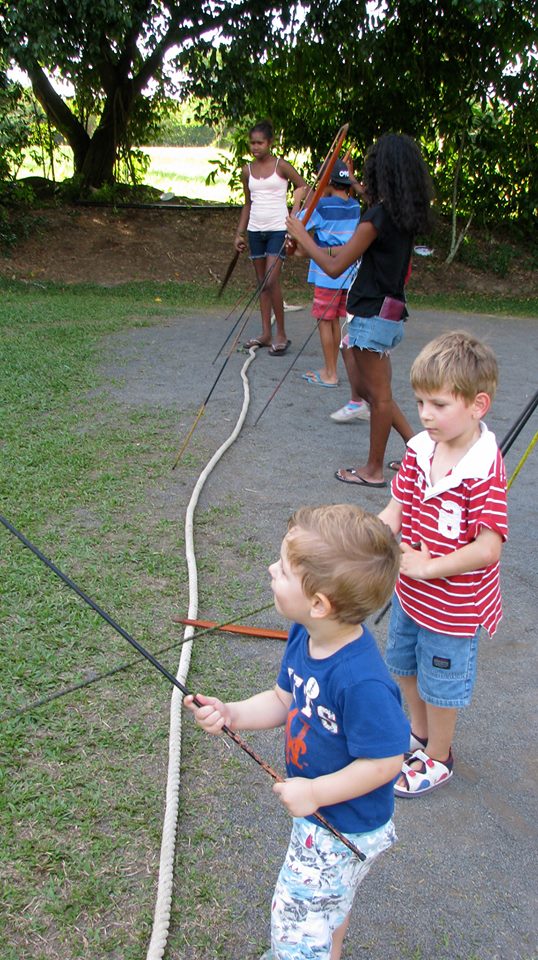
Nothing like a bit of brotherly spear throwing. At NAIDOC celebrations at the Tjapukai Aboriginal Cultural Park in Cairns
There are opportunities to engage kids in Indigenous tourism all around Australia including the capital cities. My preference is for Indigenous tourism that is Indigenously owned, because this contributes to empowerment and social determination within the Indigenous community. Hands on activities involving music, dance and weaponry i.e boomerang throwing have been a huge hit with my little boys. I haven’t been back to the Northern Territory and Kakadu with my own children but am yearning to. Gagudju Dreaming, the sponsors of this post are an Indigenous owned collection of Kakadu wetland cruises, 4WD Kakadu tours, cultural experiences and Kakadu accommodation. The operation focuses on positive Indigenous outcomes and partnership with the Accor Brand in the management of the Gagudju Crocodile hotel facilitates capacity building in the Indigenous community. I stayed in the Gagudju Crocodile in the past and it was an oasis of luxury to retreat to after a day exploring the National Park.
Indigenous Art and Culture.
I have noticed that Indigenous dance will often feature on the program at community festivals in Australia’s capital cities so this is an opportunity open to most Aussie families. Look out for annual NAIDOC celebrations all around the country. There are specific Indigenous festivals that expose the whole family to Indigenous Art and Culture which are worth a trip in themselves. These include the Cairns Indigenous Art Fair and the Laura Aboriginal Dance Festival in the Cape York Peninsula.
Nearly all major museums and art galleries in Australia have Indigenous exhibitions so we take the time to experience these no matter where we are in the country. We have gone a step further and incorporated Indigenous art in our home, and talk about the art with our kids.
Acknowledging Indigenous traditional owners.
When out and about we will often notice signage about the traditional owners of whatever land we are on. I try to take the time to chat about this with my little guys, to wonder what life was like for the traditional owners in time past and today.
Reading Indigenous Stories.
Fortunately my sons seem to have been exposed to Dreamtime stories, such as that of the Rainbow Serpent in kindergarten and school. I have also made sure there are some, as well as stories of contemporary Indigenous folk in our home children’s library. Having a chat with your local librarian should point you in the right direction to facilitate you doing this yourself.
So that’s it, except it isn’t. I’d love to hear from other people how share a positive message regarding Indigenous Australia with their own kids, and if there are any special festivals, or Indigenous tourist experiences you think we should attend.
© Copyright 2014 Danielle, All rights Reserved. Written For: Bubs on the Move

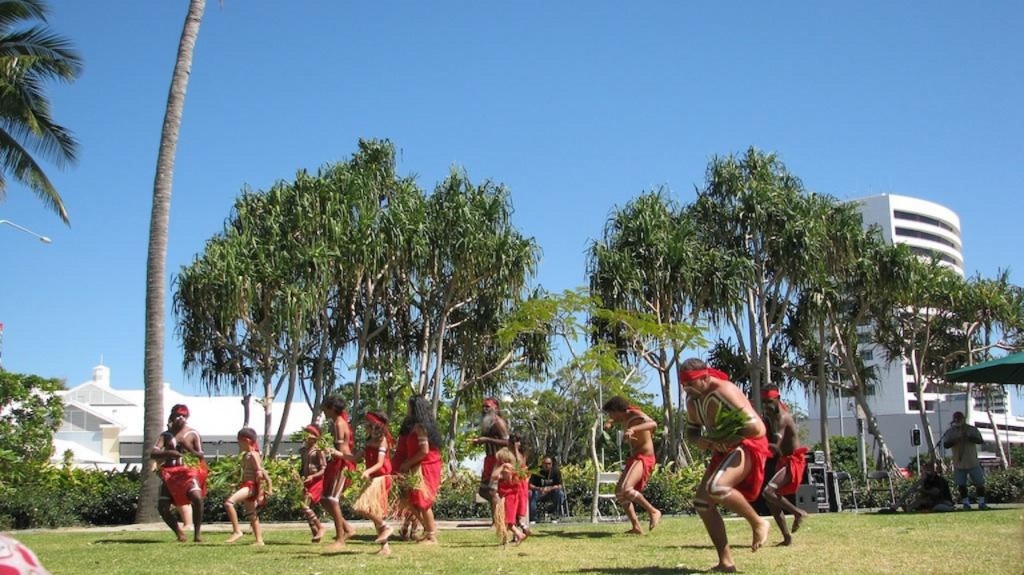
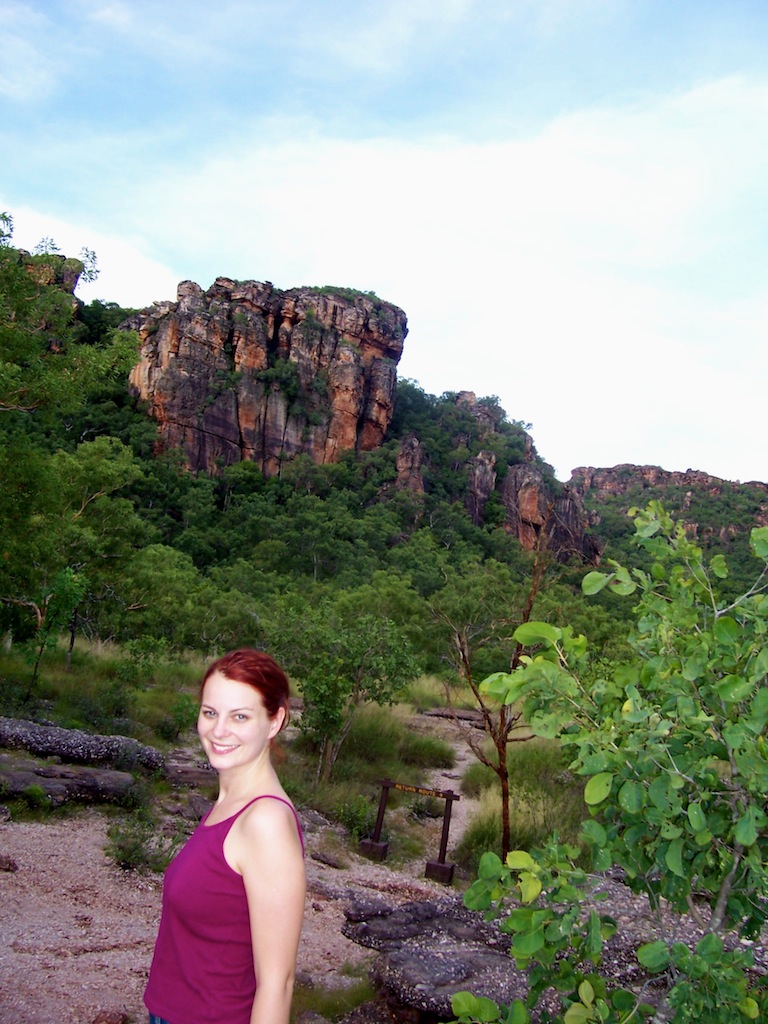
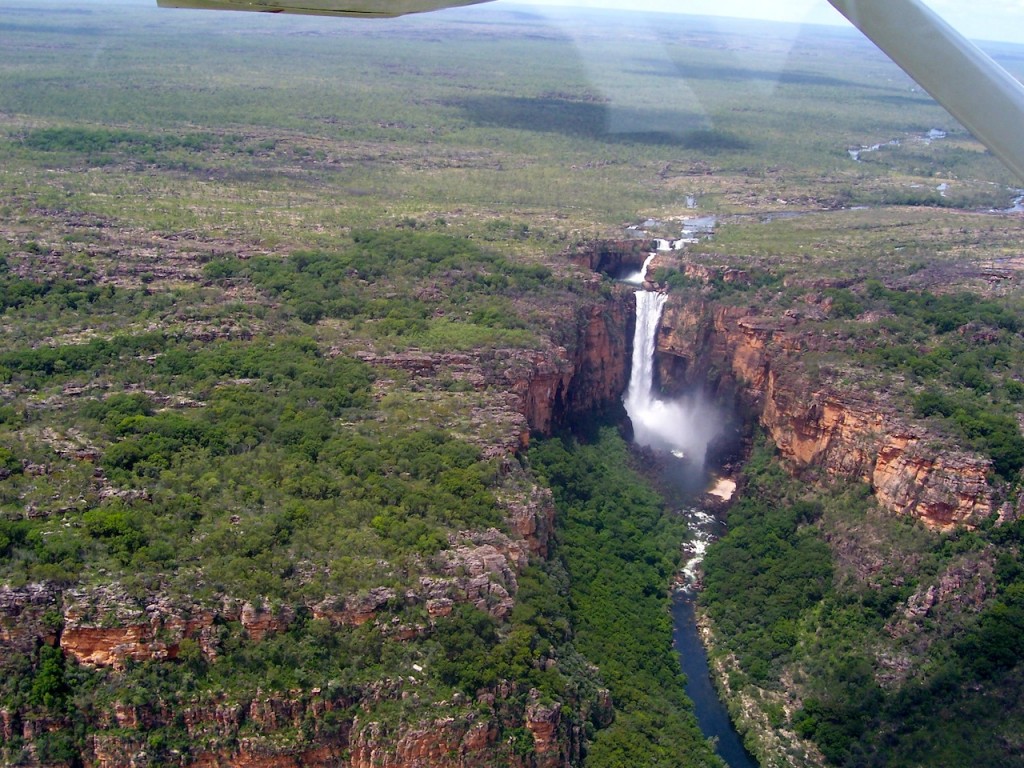
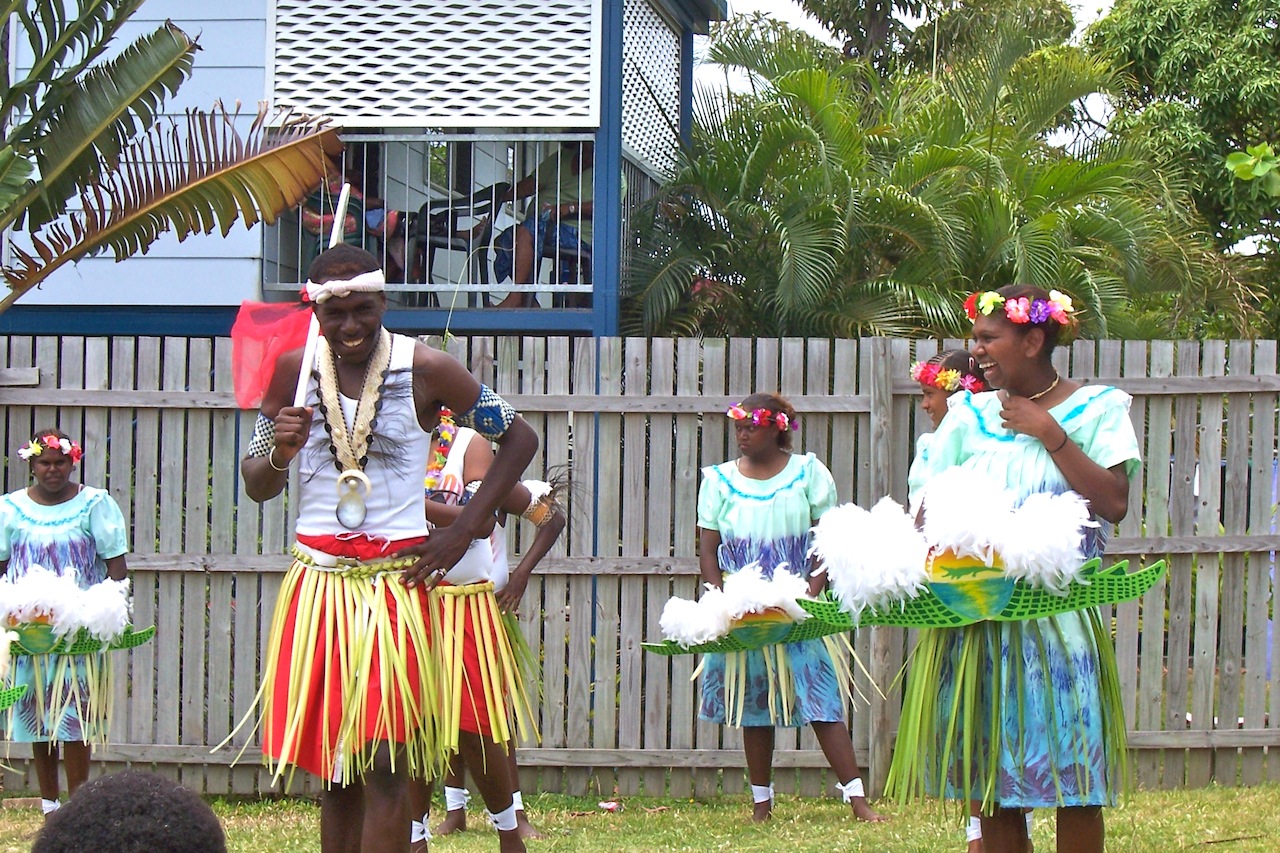
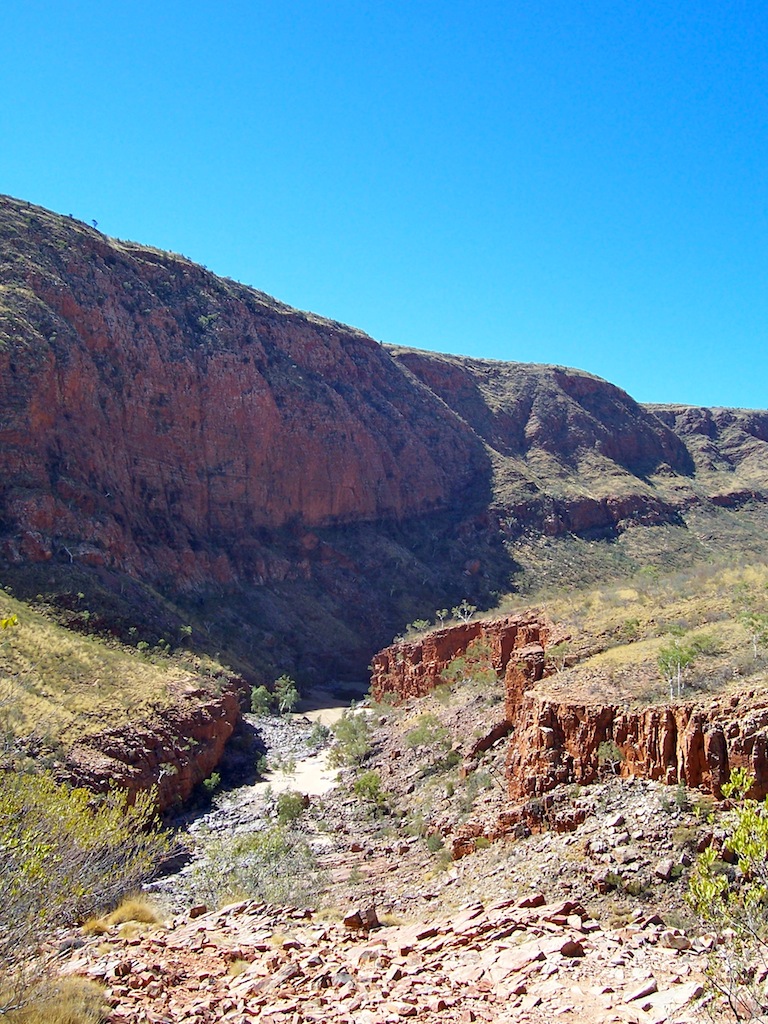




Our kids went to school in Townsville NQ and there was a high percentage of indigenous children at their school. The external walls of the school that the kids walked by and ate their lunch by every day were decorated with aboriginal paintings. As a parent helping in the classroom I had many chances to read with and help all the kids whatever their cultural persuasion. I remember the beautiful eyes of one of the young indigenous boys, his quiet reserve and beautiful melting smile. I remember his name of course but I won’t tell – you might think I was name dropping. He is now a very well known footballer. We live in a street with a lot of aboriginal faces and a friendly wave and a quick hello when we pass in the street is normal. Familiarity does lessen barriers. 🙂 A lovely blog post Danielle and the Kakadu photograph is superb. The photo of the Torres Strait dancers looks like a NQ back yard. 🙂
Are you catching up on blog posts from Japan Jan? I have been following your photos on Facebook. I think you’re right – kids that grow up in Austalia’s north are just familiar with Indigenous Australians, unlike kids here in Melbourne. I think the Torres Strait performance was just in a backyard up on Thursday Island 🙂 Oh, and don’t worry about name dropping. I don’t think I know any footballers names no matter how famous, my son on the other hand seems to already know them all.
I forgot to mention your new page header. Very nice – but I did love that photo of your boys – although I realise it is now redundant because of your latest addition to the family. 🙂
Thanks Jan. I love that photo of the boys too. The idea with the new template is to have different photos rotating through the header, but that one of the boys looks pixelated. Untech savvy me I am struggling with it a bit. Hoping to get it up there again soon.
Yes, noticed the new layout! It’s good to update it sometimes as the content shifts (and the family changes!)
But on to this post – great stuff. I really noticed the difference on our visit to Darwin in terms of the general familiarity/awareness of Indigenous culture compared to SE Queensland. I was there for a conference and the local Indigenous population had a representative welcome everyone on to their land – wouldn’t have happened at a conference in Brisbane, yet there were people here, too, before John Oxley arrived.
Thanks Bronwyn. Ah, the whole “Welcome to country thing at conferences.” I have seen it happen down south, but not so much perhaps. I think pretty much every Darwin conference has a formal welcoming ceremony though which is great.